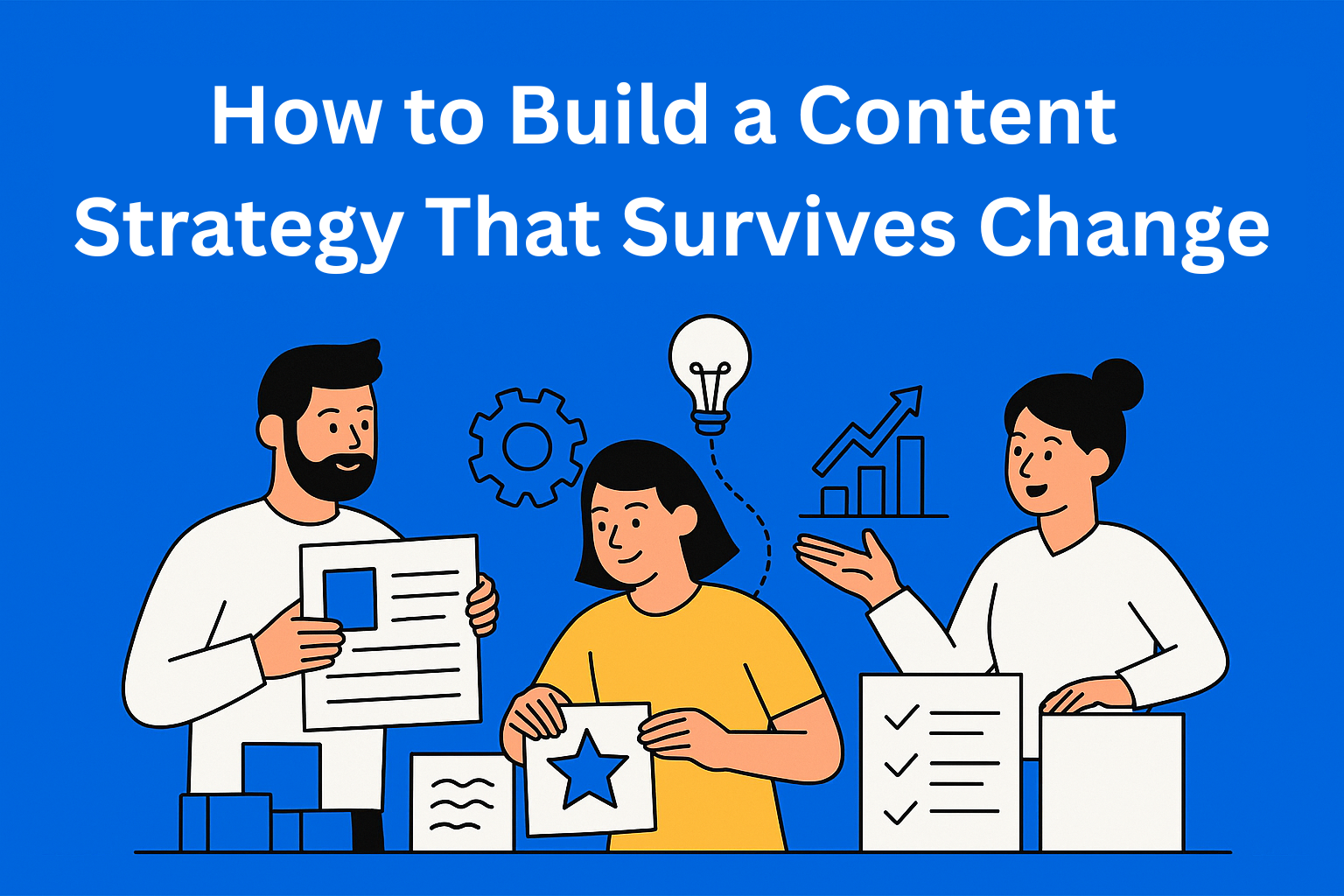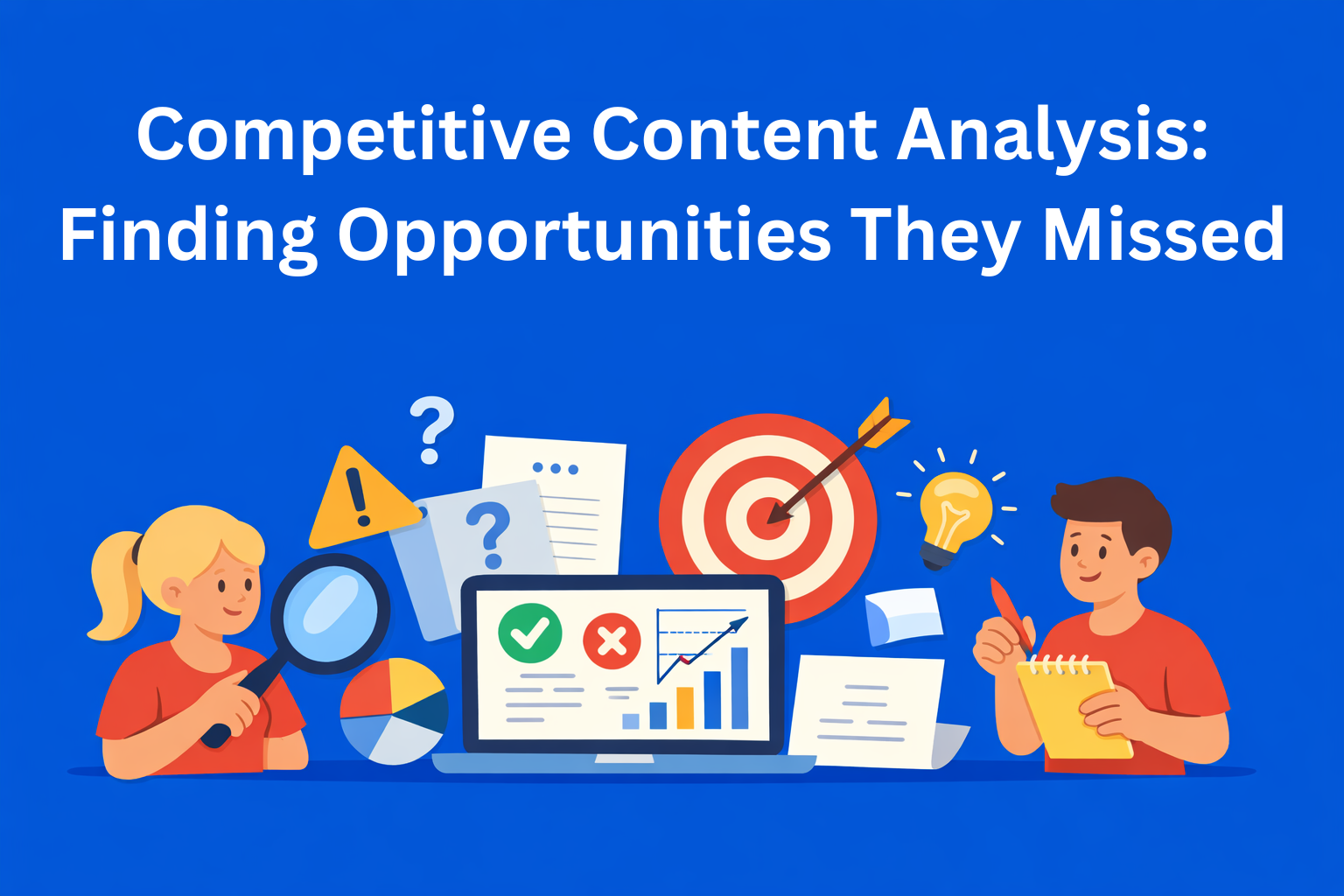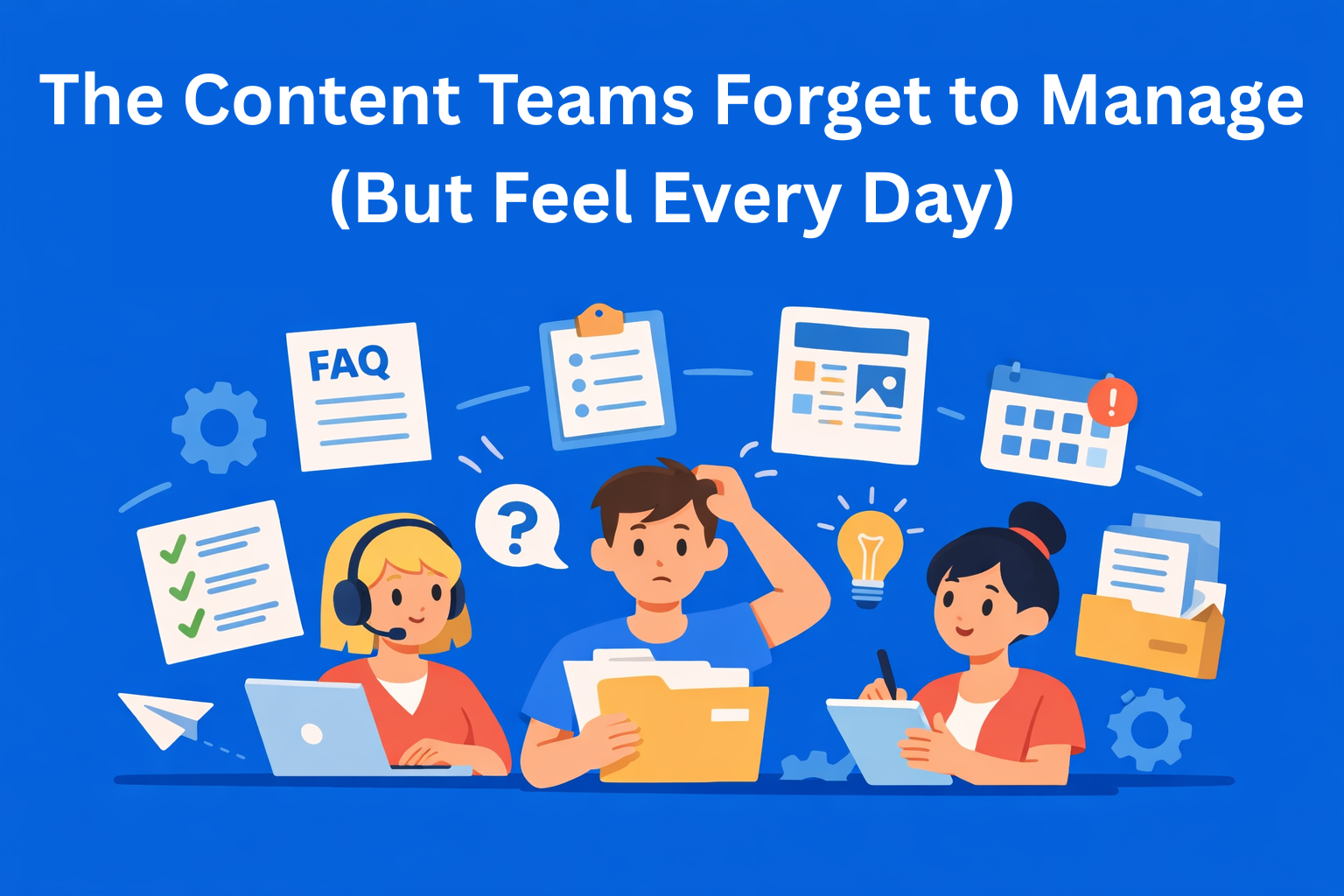How to Build a Content Strategy That Survives Priorities Changing Every Quarter
Learn how to build a flexible content strategy that stays solid, even when priorities change every quarter. Discover practical tips on planning, workflows, and reusable content that help you stay focused without starting from scratch.

When you work in a team where things constantly change, a new campaign, a new goal, or something urgent, it’s easy to feel like there’s no way to create a stable content plan. One month you’re doing one thing, the next something completely different, and it always feels like starting from scratch. That’s why it’s important to have a simple content strategy that stays stable even when priorities shift. The point is to build a system that’s flexible enough to adapt, but still strong enough to hold.
In this blog, we’ll go through simple principles that help you stay focused even when everything around you is changing.
Key Takeaways
- Content pillars create long-term stability - clear topic areas prevent chaos even when priorities shift every month.
- Modular planning keeps the strategy flexible - instead of one big plan, small interchangeable modules make it easy to respond to new priorities.
- Workflows absorb urgent requests - standardized processes, defined roles, and a bit of elastic capacity protect the team from overload.
- Reusable content saves time - content atoms, evergreen pieces, and a structured library allow fast reactions without losing quality.
- Strategy evolves through light updates, not full resets - monthly retros and quarterly refreshes keep the system stable while remaining adaptable.
Why Priorities Keep Changing
Priority changes don’t happen because someone likes to change the plan, they happen because the market, competition, or customer needs shift. That’s totally normal. The problem starts when the content team doesn’t have a clear and simple system that can handle those changes.
When there’s no system, every change feels chaotic: old plans are thrown out, something new must be done right away, and there’s no space to plan or think strategically. That’s why it’s important to have a structure that lets you react quickly, while still staying in control. A strong content strategy isn’t something that changes every month, but a system that can adapt to everything else.
Defining Strong Content Pillars
The first step to building a stable strategy is defining your content pillars. These are the main topic areas your content will cover over time. They must be connected to your company’s mission, not just current campaigns. When they’re defined, you always know the direction you’re heading, no matter what’s happening around you.
For example, instead of saying "February campaign," use "customer education" or "solving audience pain points." These pillars last longer, change slowly, and give you stability even when a new request comes in. With clear pillars, each new task easily fits into your existing content strategy framework.
A System That Adapts Easily to Change
Now that you have your core content pillars, the next step is to create a simple system that can adapt to change, instead of falling apart when something unexpected happens.
Modular Planning
Instead of creating a big, rigid plan for the whole year that falls apart the moment something changes, break your plan into smaller parts, modules. A module can be a month, theme, or small campaign. If the priority changes, you simply swap one module for another.
How this works in practice: Instead of one big plan, you have several smaller ones (modules), like:
- Module 1 (January): topics around audience education
- Module 2 (February): brand content
- Module 3 (March): case studies and customer stories
Now imagine in February a new priority comes in, management wants a campaign for a new product. If you had a single big plan, you'd have to change everything. But now you just remove Module 2 and insert the new one.
Thematic Routes
Thematic routes are an easy way to stay flexible. They are content directions that you can easily adjust when a new need appears. If one of your pillars is "education," a thematic route could be a series of tips, guides, or interviews. When a new priority shows up, just adjust the route, no need to start over.
Priority Filter
To avoid unnecessary panic and jumping from one thing to another, create a few simple questions to help you quickly assess any new request. For example:
- Is this really urgent?
- Does it contribute to one of our content pillars?
- Can we fit it into an existing module?
This filter keeps your focus and strengthens your content strategy because it helps you make decisions that make the most sense.
A Workflow That Handles Urgent Requests
When working with constant changes, workflow is what separates chaos from order.
Standardized Processes
SOPs might sound complicated, but they’re actually just simple instructions the team follows: who writes the text, who checks it, and how it gets published. When something urgent comes up, you still follow the same steps. You don’t waste time explaining the process every time.
A clear process keeps quality up, speeds up the work, and protects your content strategy from unnecessary mess.
Clear Roles in the Team
When everyone knows what they’re doing, changing priorities isn’t a problem. If someone writes, someone edits, and someone manages the project, every new task is easily assigned. This reduces stress and boosts efficiency.
Elastic Capacity
Elastic capacity means always having a bit of space in your plan for urgent stuff. That could be one day a week, a few hours, or simply a reserved part of the backlog. When a new request appears, you have space to add it without stopping the whole system.
This approach makes your content strategy more resilient to change and helps maintain momentum.
And if you’re wondering how to set this up easily, the answer is simple, EasyContent. With this tool, you can create your own workflow and adapt it to any project you're working on. Assign roles in the team, create flexible templates, schedule posts with the content calendar, and more. Everything you need for a great content strategy.
Reusable Content: Build a Library, Not One-Offs
One of the most important ways to save time, energy, and stability is by creating content that can be used multiple times. Reusable content means every bit of effort brings long-term value.
Content Atoms
Atoms are small pieces of content: short tips, quotes, mini ideas, graphics, or explanations. These can be combined into different formats, blog posts, newsletters, videos, or social media. When you have an atom library, it’s easy to respond to new needs because you already have ready-to-use material.
This method helps your content strategy grow fast without overloading your team.
Evergreen Content
Evergreen posts, guides, or resources are useful for a long time. Once you create them, they can be updated, adapted, and reused in new campaigns. They provide consistency and give stability.
How to Reuse Content More Easily
When you have a simple plan for reusing content, you can easily break down one big text into several smaller pieces. For example, a blog post can become a series of short posts. This saves time and makes your content strategy more efficient and easier to manage.
Processes That Evolve Without Losing Momentum
Strategy isn’t something you create once and forget. It lives, grows, and changes, but in a controlled way.
Monthly Retros
Once a month, take a short moment to review what worked, what didn’t, and what should be adjusted. This lets you keep improving the process without making big, stressful changes.
Quarterly Refresh
Instead of creating a brand-new strategy every quarter, just refresh the current one. See which topics stay, what needs to be added, and what to remove. This light update keeps things stable but also flexible.
Tools That Keep Up With Change
A content map, editorial board, or content calendar, like the earlier mentioned EasyContent, can help you stay organized. A tool shouldn’t be complicated, it should give you clarity and confidence.
How to Stay Focused Despite Changes
In a world where new requests keep coming in, it’s easy to lose focus. That’s why you need clear techniques to stay on track.
- One way is to decide what’s really important and urgent, and what can wait.
- The other is to clearly explain to your team and leadership how your system works and why you can’t finish every task immediately.
When people understand how your content strategy works, they’re more likely to accept realistic timelines and structured work.
Conclusion
A good strategy doesn’t have to be complicated. It just needs a set of simple rules that work together. Main themes guide the direction. A plan broken into smaller parts makes change easier. Reused content saves time. Clear organization prevents chaos. Regular check-ins help keep everything on track.
When you put all of this together, you get a system that doesn’t fall apart with every shift in priority. Instead of starting from scratch every few weeks, you have a content strategy that bends when it needs to, but never breaks.






